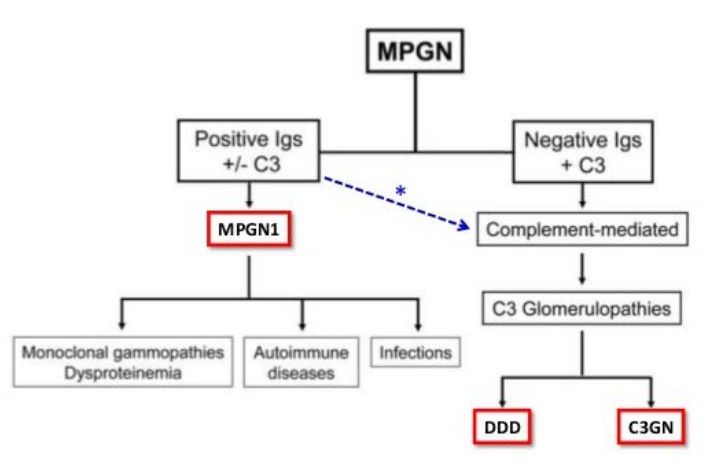GLOMERULONEPHRITIS-MEMBRANOPROLIFERATIVE GN
SUMMARY
1. MPGN (a biopsy diagnosis) is associated with primarily lupus, and HCV-associated cryoglobulinemia.
2. Pathology is marked by activation of complement, and about 50% of the time the complement levels are low.
3. MPGN is one of the diseases that can present either as nephritic/nephrotic or combined nephritic-nephrotic.
4. Immune complex-mediated MPGN: results from the deposition of immune complexes in the glomeruli as a result of chronic infection (hepatitis C and B). Low C3 and low C4 common.
5. Complement-mediated MPGN: due to mutation in proteins that regulate the alternate pathway resulting in overactivity.
6. The low C3 in PIGN returns to normal after 2-3 months; but in patients with MPGN, it stays low indefinitely. If you suspected PIGN & C3 stays low > 3 mths, suspect MPGN instead, get a renal biopsy!
7. Treatment is aimed at the underlying cause, includes plasmapheresis for cryoglobulinemia.

DDD: Dense Deposit Disease
Reference(s)
Wilkinson, I. (2017). Oxford handbook of clinical medicine. Oxford: Oxford University Press.
Hannaman, R. A., Bullock, L., Hatchell, C. A., & Yoffe, M. (2016). Internal medicine review core curriculum, 2017-2018. CO Springs, CO: MedStudy.
Therapeutic Guidelines. Melbourne: Therapeutic Guidelines Limited. https://www.tg.org.au [Accessed 2021].